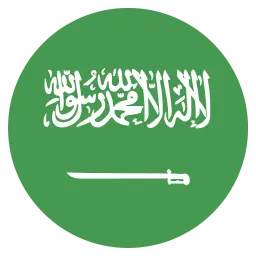All You Need To Know About modern Islamic Finance
Islamic finance is a growing part of the international financial system. Today, it is worth almost three trillion dollars globally, with an estimated annual growth rate of 10%-12% over 2021-2022.
Throughout history, Muslims have sought to derive legal and financial frameworks in line with Islamic values, based on the Quran and the teaching of the Prophet (Peace Be Upon Him).
Despite its potential, Islamic finance still appears too foreign and complex to a mainstream audience, and many of its individual and social benefits are overlooked.
Today’s article presents an overview of Islamic finance. How was modern Islamic finance born? And what are its key principles?
This article is the first in a series that will unravel the concept of Islamic finance to make it more accessible to first-time readers.
A Few Historical Milestones About Islamic Finance
Islamic finance as a structured sector was established in the second part of the twentieth century. However, it has been practiced by Muslim businessmen since the very early days of Islam.
Throughout medieval times, Muslim tradesmen gradually established sharia-compliant financial structures, which were, incidentally, based on the very same principles as their Christian European counterparts at the time.
In the nineteenth century, European banks started to establish branches that Muslims did not find accessible as it compromised their principles. Muslims then started to set up alternative modern financial models based on Islamic principles.
How was Modern Islamic Finance Born?
An important milestone in the history of modern Islamic finance is the creation of the Mit Ghamr Savings Project (1963), which worked on a cooperative basis to fund small businesses in rural Egypt. Concomitantly, in Malaysia, the Prospective Hajj Pilgrims Savings Corporation- known today as Tabung Haji- was established to provide saving plans for pilgrimage.
Modern Islamic finance has been growing exponentially since the 1970s with the establishment of Islamic banking, in the Middle East. The first sharia-compliant commercial bank, Dubai Islamic Bank. Opened in 1975 by the late Hajj Saeed Lootah and is today the second largest Islamic bank in the world.
At the same time, the first sharia-compliant development bank is founded in 1973 during the Conference of Finance Ministers of Muslim countries (Jeddah, Saudi Arabia) and formally commences its operations in 1975. Saudi Arabia is its main shareholder, holding around 25 % of its assets. Islamic banking is also developing in Europe with the opening of the Islamic Bank of Britain, also known as Al Rayan Bank in 2004.
Islamic Finance Today
Today, Islamic finance assets are distributed across the world, mostly in Muslim countries. Almost half of the Islamic assets are domiciliated in the Gulf Cooperation Council (45 % of assets in 2020, according to the Islamic Financial Services Industry Stability Report 2020). South-East Asia countries are also an important player, with 24 % of assets.
However, Islamic finance is growing in non-Muslim countries such as the UK. The British government issued in 2015 its first sovereign Islamic bond, worth £200m. A second one, worth £500m, has also been issued in 2021.
Islamic finance assets are distributed between banking (72 % of assets in 2020), Islamic bonds (22 % of assets), Islamic funds (1.3 %) and insurance (takaful, 1.1 %).
Islamic finance is currently experiencing a revival with the boom of cutting-edge sharia-compliant Fintech companies providing innovative solutions in the context of the fast digital transformation of financial services.
What Are The Key Principles of Modern Islamic Finance?
Modern Islamic finance is based on few powerful principles. They aim at establishing ethical transactions based on equitable risk-sharing between parties:
1. Fairness and transparency: transactions cannot be based on uncertain terms and conditions. All the terms and conditions embedded in the transactions must be clearly disclosed in the contract.
2. Prohibition of investing in businesses involved in activities that are not considered lawful as per Islamic law, which include selling pork or producing alcohol, drugs, and pornography.
3. Prohibition of charging or paying interest (Riba), defined as “surplus value without counterpart”. Islam considers transactions based on Riba as unfair because they favor the lender at the expense of the borrower.
4. Asset Backing: Money cannot be made from money. Financial transactions must have a direct link to underlying tangible assets.
5. Prohibition of speculation (Maisir) and excessive uncertainty (Gharar): Maisir refers to transactions where the profit or ownership of a good is uncertain because it is contingent on the occurrence of an uncertain event in the future. Maisir includes gambling. Gharar refers to transactions where the existence or characteristics of the asset are ambiguous and uncertain.
Conclusion
Islamic finance is a fast-growing industry. It is based on solid ethical, legal, and economic foundations, which rely on a few powerful overarching principles.
Islamic finance offers many innovative and actionable sharia-compliant alternatives to conventional finance. In the next article of this series, we will present the main Islamic financing structures and how they are applied in practice.
References and Further Reading
1) IMF (2017). The IMF and Islamic Finance.
2) Nagaoka, S. (2012). Critical overview of the history of Islamic economics: Formation, transformation, and new horizons. Asian and African area studies, 11(2), 114-136.
3) Schoon, N. (2008). Islamic Finance – An Overview. European Business Organization Law Review, 9(4), 621-635.
4) Soage, A. B. (2020). An overview of Islamic finance: History, instruments, prospects. Journal of the Sociology and Theory of Religion, 9, 60-81.
Image Credit: Photo by Khaleelah Ajibola on Unsplash
Disclamer:
This post is for educational purposes only, and the Firm does not directly or indirectly provide these services.



